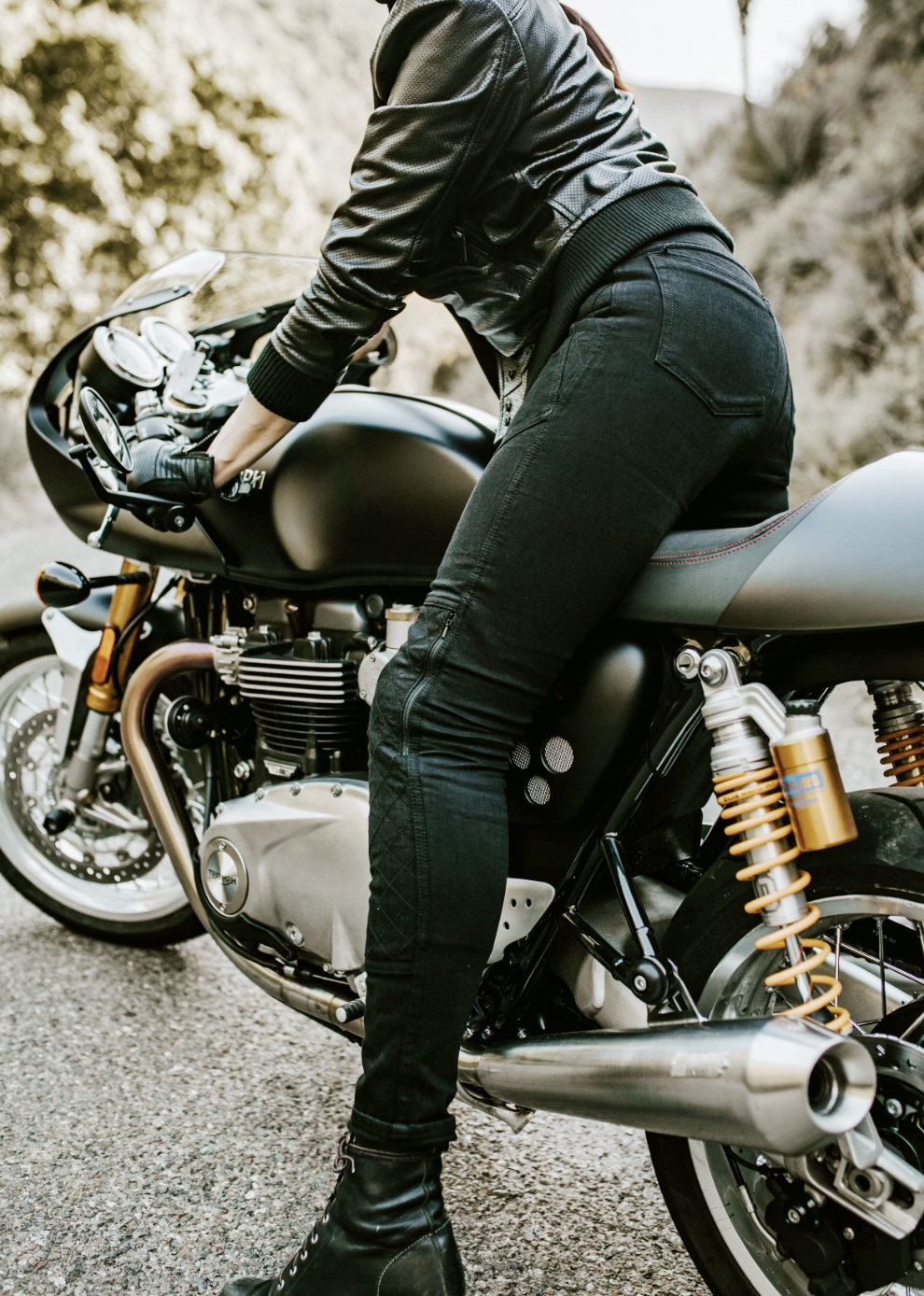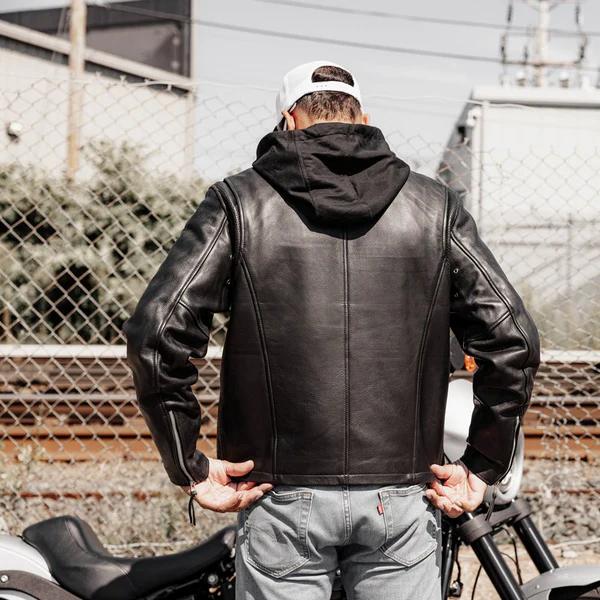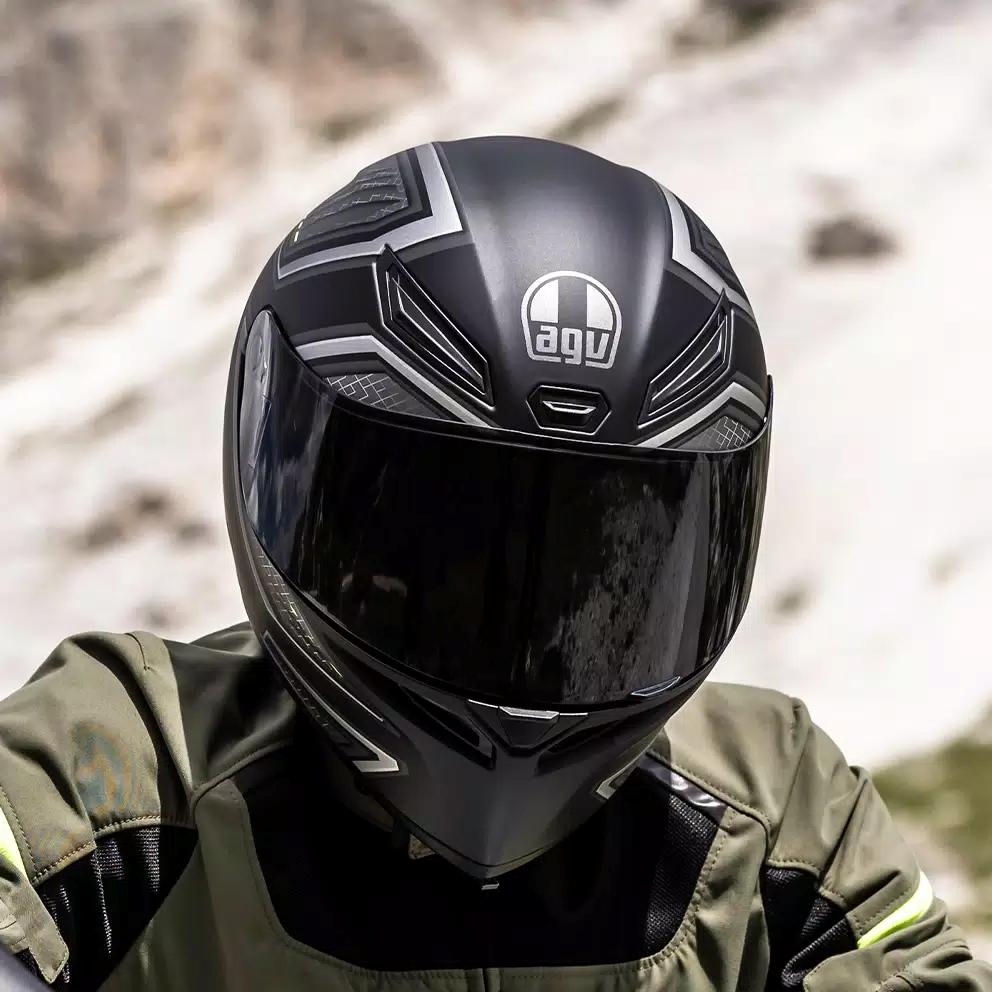Buying Your First Motorcycle: The Gear You Actually Need
When most new riders start shopping for their first bike, gear is often an afterthought. The truth is, what you wear on the bike matters just as much as what you ride. In Episode 3 of our “What to Know Before You Buy Your First Bike” series, we are walking you through real world motorcycle gear – the stuff we actually use and recommend for riders getting started. Whether you are riding to work, commuting through town, or heading out for weekend fun, this guide will help you gear up smart – and ride with confidence.

Pants & Boots: The Minimum vs. The Ideal
For casual riding, regular jeans and over-the-ankle boots can get the job done — and that’s what you’ll see us wearing in the demo.
But let’s be honest: while denim and combat boots are better than nothing, they don’t offer much if you take a slide.
The better option? Motorcycle-specific riding pants.
These are built with abrasion-resistant materials and often include armor at the knees and hips, giving you a much higher level of protection in a crash. Some even look like regular jeans but include Kevlar panels or CE-rated armor underneath.
As for Footwear: You want a boot that covers the ankle, has a strong sole, and offers decent impact protection. Combat boots work, as long as they’re sturdy — but avoid anything with soft sides, foam soles, or minimal grip.
Sneakers are a no-go. They don’t offer enough ankle support or crash protection.

Jackets: Not Just for Crashes
A proper motorcycle jacket does more than protect you in a wreck — it also shields you from wind, sun, road debris, and even light rain.
One great example is the Icon Mesh AF Jacket, which we feature in the video. It’s lightweight and breathable — perfect for warm weather — but it still includes D3O armor in the shoulders, elbows, and back. All of that is removable, so you can swap it or upgrade as needed.
Another underrated feature? Reflective accents. They help keep you visible in low-light or nighttime riding conditions, without making the jacket look like construction gear.

Gloves: The First Thing to Hit the Ground
Your hands are incredibly vulnerable during a crash — even at low speeds. That’s why a good pair of gloves should be one of the first pieces of gear you buy.
In our demo, we show the Rocket Turbulent Gloves, which include Kevlar-reinforced knuckles and extra grip in the palms. They’re lightweight, flexible, and give you better throttle control — all while keeping your fingers protected.
Look for full-finger coverage, reinforced palms, and some impact padding on the knuckles. Once you ride with gloves, you’ll never want to go without them again.

Balaclavas: Optional, but Incredibly Useful
Not all riders use them, but balaclavas (like the Zan Headgear Sportflex series) have some surprising benefits — especially for those wearing full-face helmets.
- They help keep sweat and hair products off the inside of your helmet
- They protect makeup and help keep long hair from tangling
- They make your helmet easier to take on and off
- And they’re easy to wash, unlike your helmet liner
If you ride in warmer weather or share helmets with other people, a balaclava is a great add-on for comfort and hygiene.

Helmets: What You Must Know Before You Buy One
Your helmet is the single most important piece of motorcycle gear you’ll ever buy — so let’s make sure it’s the right one.
Safety Certifications
At a minimum, your helmet should be DOT certified (Department of Transportation). This is the legal standard in the U.S.
For even more protection, look for ECE (European Safety Standard) or Snell certifications — both offer more advanced impact testing.
Style & Protection Levels
There are several helmet types, each with pros and cons:
- Full-face: Best all-around protection — covers your face, jaw, and chin. Great for new riders.
- Modular: Flip-up front allows easy on/off and stops, but not as impact-resistant as full-faced when open.
- ¾ Helmet: Offers head protection but leaves the face and jaw exposed. More airflow, less protection.
In our video, we use the AGV K1S, a full-face helmet with pinlock ready shields (anti-fog insert compatible), interchangeable visors, and a wide 190-degree field of vision for excellent visibility.
Fit Is Everything
Your helmet should feel snug — not painfully tight — with firm cheek pad contact. Shake your head — the helmet shouldn’t move.
If it lifts or wobbles, it’s too big. If it gives you a headache, it’s too small.
Fit is personal, and different brands have different head shapes — so try before you buy when possible.
Final Thoughts: Build Your Kit Smart
You don’t need to spend thousands to get good gear. Start with the basics:
- A well-fitting DOT-approved full-face helmet
- Protective jacket with armor
- Full-finger gloves
- Sturdy boots and, when possible, riding pants
- Optional add-ons like a balaclava for added comfort
Beyond protection, good gear makes riding more comfortable, more enjoyable — and ultimately safer.
Need Help Finding the Right Gear?
We carry a full range of gear in-store — from jackets and gloves to helmets, pants, and more.
Stop by and we’ll help you find the right fit for your style, your bike, and your budget.
For more information check out our video at: